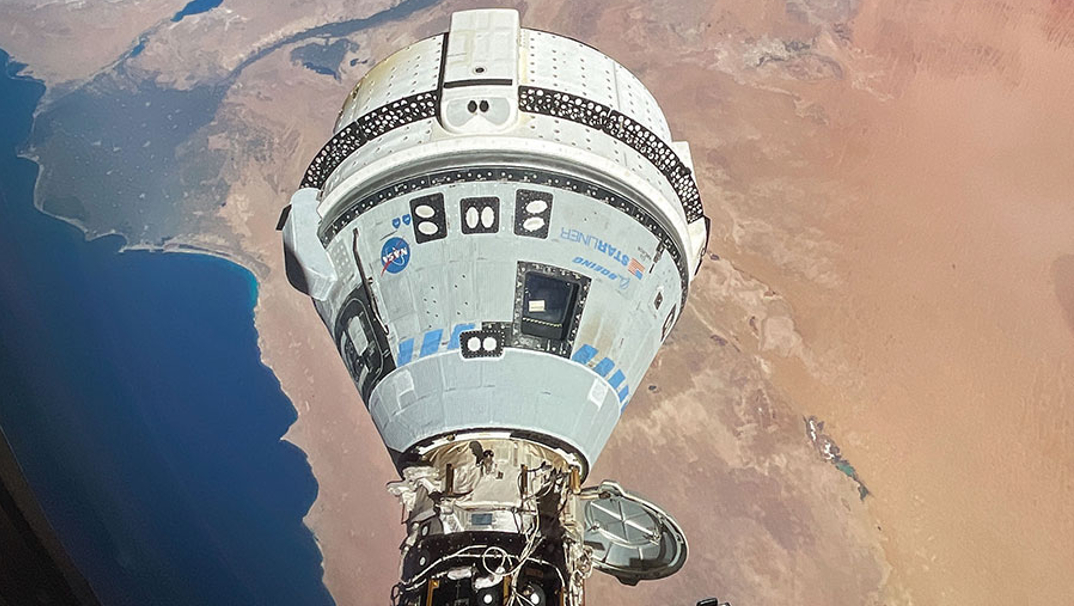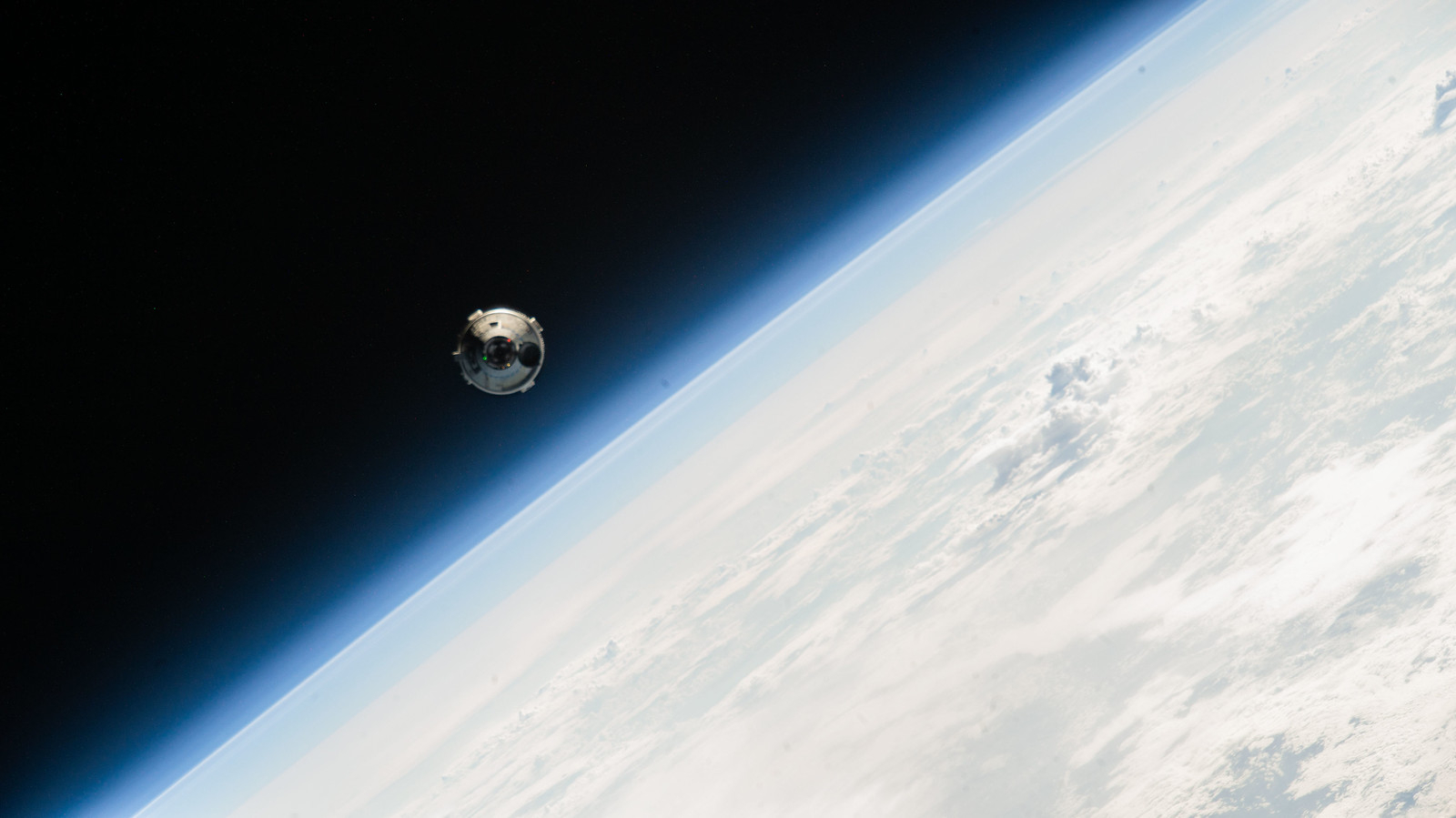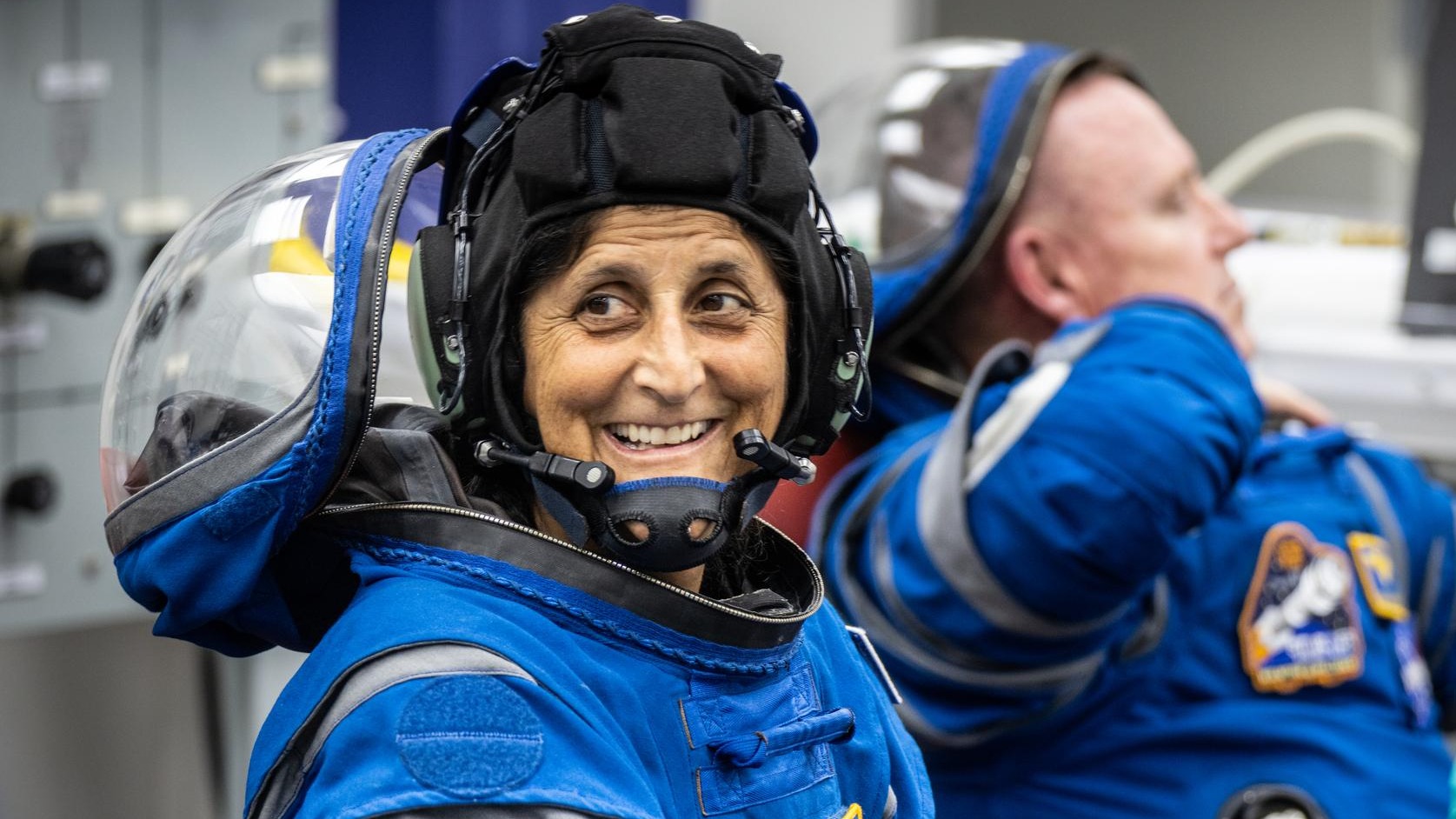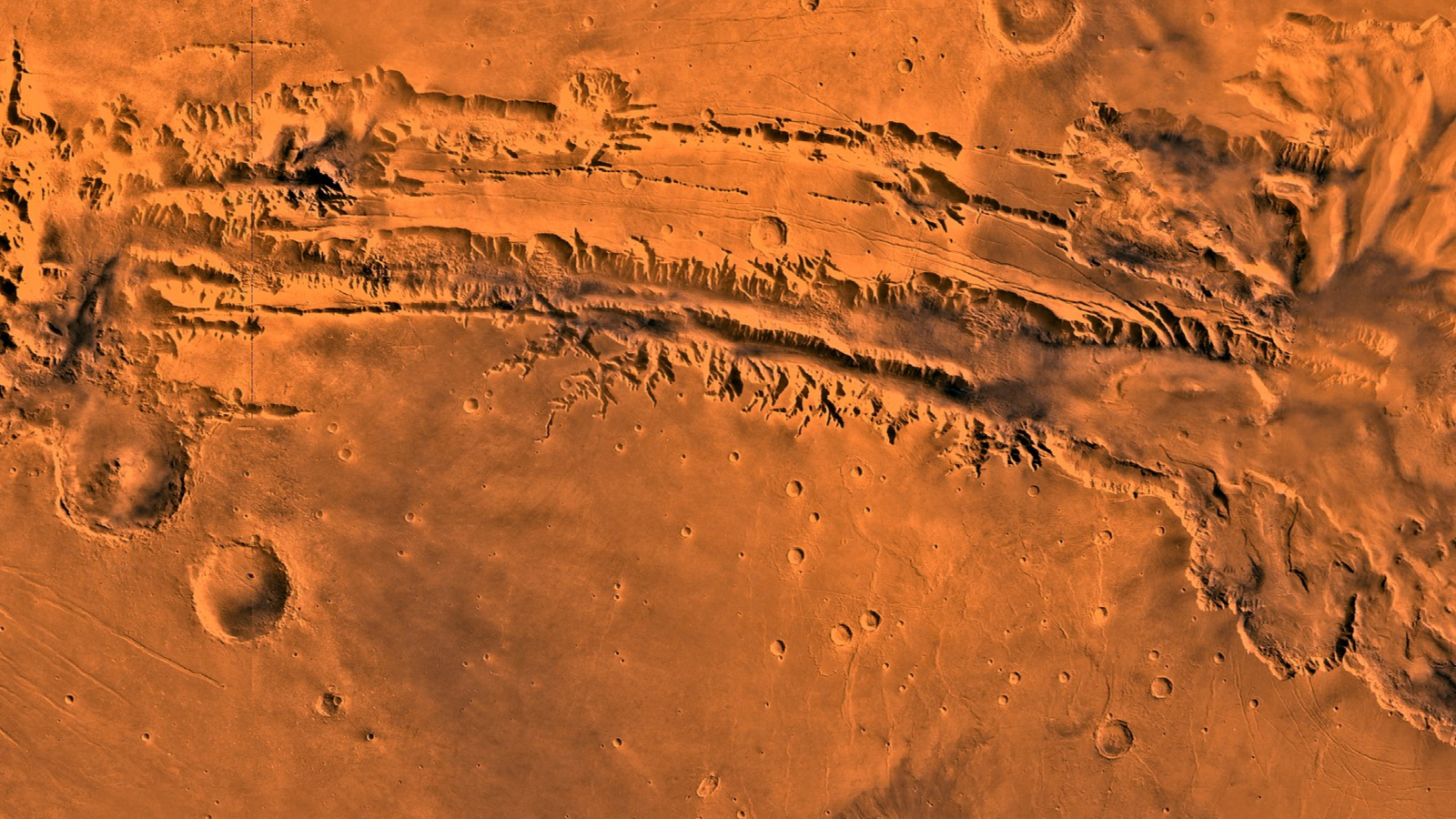Will Boeing Starliner issues delay its 1st long-duration astronaut flight? It’s too soon to tell.
Starliner-1 is supposed to fly in 2025, but that assumes that no major issues arise on its first astronaut mission, which is ongoing.

While NASA and Boeing are focused on finishing the first astronaut mission aboard the Starliner spacecraft early next month, what happens next is already on everyone's mind.
Boeing's Starliner capsule was delayed again Friday (June 21) in finishing its first International Space Station (ISS) mission with astronauts, with crew including NASA's Butch Wilmore and Suni Williams. Extra testing still remains ahead of undocking, team officials emphasized; Starliner experienced helium leaks and thruster issues that extended its Crew Flight Test (CFT) mission from an originally planned 10 days after launching June 5. NASA and Boeing have not yet announced a return date for Starliner, saying only it will happen after a July 2 spacewalk.
As a test flight, the unexpected on CFT was in a sense, expected. But there's a key milestone coming up fast: Starliner was expected to start its first operational mission to the ISS in early 2025. Known as Starliner-1, it is manifested to carry at least three astronauts to the ISS for a normal six-month mission.
NASA's Steve Stich told reporters recently (before the most recent delay on Friday) that the certification timeline for Starliner-1 may shift to the right, but the focus right now is bringing CFT to a safe conclusion.
"We're not going to go fly another mission like this with the helium leaks," Stich, manager for NASA's Commercial Crew Program, said during a June 18 teleconference. That discussion will come "later this summer, [to] lay out all the work in front of us after the vehicle comes back with the crew, and then figure out what the path forward is."
Starliner's first helium leak was found on the launch pad in early May, after a scrub due to a valve issue with the capsule's United Launch Alliance Atlas V rocket. The leak was not deemed an immediate threat to launch, but NASA and Boeing uncovered a design vulnerability in which, if enough of Starliner's reaction control system (RCS) thrusters go offline, the capsule's reentry could be affected. The team certified an additional reentry mode in simulations with the astronauts, before authorizing Starliner again for launch.
Breaking space news, the latest updates on rocket launches, skywatching events and more!
CFT made it off the pad without issue on June 5, but Starliner experienced issues with five of its 28 RCS thrusters on its way to the ISS for docking. The first docking attempt was waved off, but Starliner achieved the second docking successfully a few hours later. Four new helium leaks also arose after Starliner reached space; a fault tree analysis and other work is still going on to figure out the root cause.
Starliner also had RCS thruster issues during its first uncrewed ISS docking in May 2022, but those appear to be due to a separate problem, officials said during the June 18 briefing. Learning why is still at an early stage.

Both NASA and Boeing have emphasized repeatedly that timelines are not the priority on CFT, and that the unpredictable can always arise. The mission's two astronauts, former U.S. Navy test pilots, have said much the same.
The mission team is using the extra time in space to understand how Starliner's service module is behaving, as it contains most of the spacecraft's fuel and power and will be discarded during landing. The RCS thrusters appear to be mostly working now, while the helium leaks are "stable and less than measured [before]," according to Mark Nappi, vice president and program manager of Boeing's commercial crew program.
Notably, CFT has achieved 77 of the original 87 flight test objectives; the final 10 will be evaluated during undocking and landing, he added.
Related: NASA weighs potential impacts of helium leaks and more on Boeing's Starliner astronaut test flight

Work after CFT will include trying to understand what is "causing the thrusters to have low thrust and then be deselected" by flight control systems, as the astronauts encountered this month, Stich said. The "silver lining" of the extended mission is that it will allow teams to get data in space that would not be possible to collect on the ground, potentially saving time in troubleshooting later.
"My goal is to get the quirks ... out of the system before we get to the phase where we will be using this vehicle to rotate up for crew members and then bring them back at the end of six months," Stich said. Some ideas are already coming to mind: for example, perhaps mission teams will change the "aggressiveness of the rendezvous profile" so as not to tax the thrusters, by firing them a little less.
"We fully intend to eliminate these, call them nuisances, for the flight," he added. "The good thing about the situation that we have is that we can stay up a little bit longer, like we talked, and get as much data as we possibly can so that we can fully understand this, or understand to the best of our ability, so we can eliminate it. And our intent is to fully eliminate these issues."

NASA and Boeing do not anticipate, however, the need to fly an additional test flights to work out the issues ahead of Starliner certification.
"We characterize these problems as learning, and additional fine-tuning that we need to do to the vehicle, in order to [achieve] a certification for our vehicle," Nappi said. "I don't see these as safety-of-flight types of issues that we would have to go fly an uncrewed vehicle to further demonstrate the system."
Starliner-1 will carry NASA astronauts Mike Fincke and Scott Tingle, along with Canadian Space Agency astronaut Josh Kutryk. The crew is far along in its training and is working closely with CFT. Fincke is a long-running astronaut with Starliner and was backup for CFT, for example, while Kutryk served as capcom (capsule communicator) during the crucial ascent phase of the test mission.
Starliner and SpaceX's Dragon capsule are tasked with bringing NASA-led astronaut crews to and from the ISS. Both Boeing and SpaceX received billion-dollar-scale contracts in 2014 for taxi services that were originally expected to begin in 2017. Technical and funding issues pushed that timeline back for both vendors, however.
SpaceX, borrowing its design from its robotic Dragon cargo spacecraft, which has been operational since 2012, achieved its first human flight in 2020. Starliner is a new spacecraft and encountered more development issues, which often arises with complex new aerospace projects.
The path to CFT was postponed after the first uncrewed test in December 2019 failed to reach the ISS due to technical glitches. The second uncrewed mission made it in 2022, but more issues with Starliner were found in 2023 with the parachute loading and with flammable tape on much of the capsule's wiring.
Join our Space Forums to keep talking space on the latest missions, night sky and more! And if you have a news tip, correction or comment, let us know at: community@space.com.

Elizabeth Howell (she/her), Ph.D., was a staff writer in the spaceflight channel between 2022 and 2024 specializing in Canadian space news. She was contributing writer for Space.com for 10 years from 2012 to 2024. Elizabeth's reporting includes multiple exclusives with the White House, leading world coverage about a lost-and-found space tomato on the International Space Station, witnessing five human spaceflight launches on two continents, flying parabolic, working inside a spacesuit, and participating in a simulated Mars mission. Her latest book, "Why Am I Taller?" (ECW Press, 2022) is co-written with astronaut Dave Williams.
-
Unclear Engineer Boeing Starliner thruster problems are not new - they had problems with the thrusters on the previous flight, too. Now there is talk about limiting the use of the thrusters rather than fixing them. That seems like an admission of inadequate design.Reply
And then there is this: https://www.bbc.com/news/articles/c0666zr4010o "Criminal charges recommended against Boeing." That has to do with aircraft, not spacecraft, but it is a charge that Boeing has a safety culture problem that was not adequately addressed after they agreed to do so to avoid prosecution for the two 737 Max crashes. There is no reason to believe that Boeing has a different "culture" in its space craft operations.
I understand that NASA is hesitant to lose Boeing as a contractor. But, realistically, going with the "established" vendor instead of the "startup" vendor has not proven to be the best choice. SpaceX has tremendously out-performed Boeing. How much better off today would NASA be is they had put the money into Sierra Space and Dream Chaser instead of Starllner several years ago?
I still think that a space taxi like Dream Chaser is the future. Launched vertically with a reusable booster and landing on a runway like an airplane just makes more sense from economic and convenience factors, not to mention safety factors.
